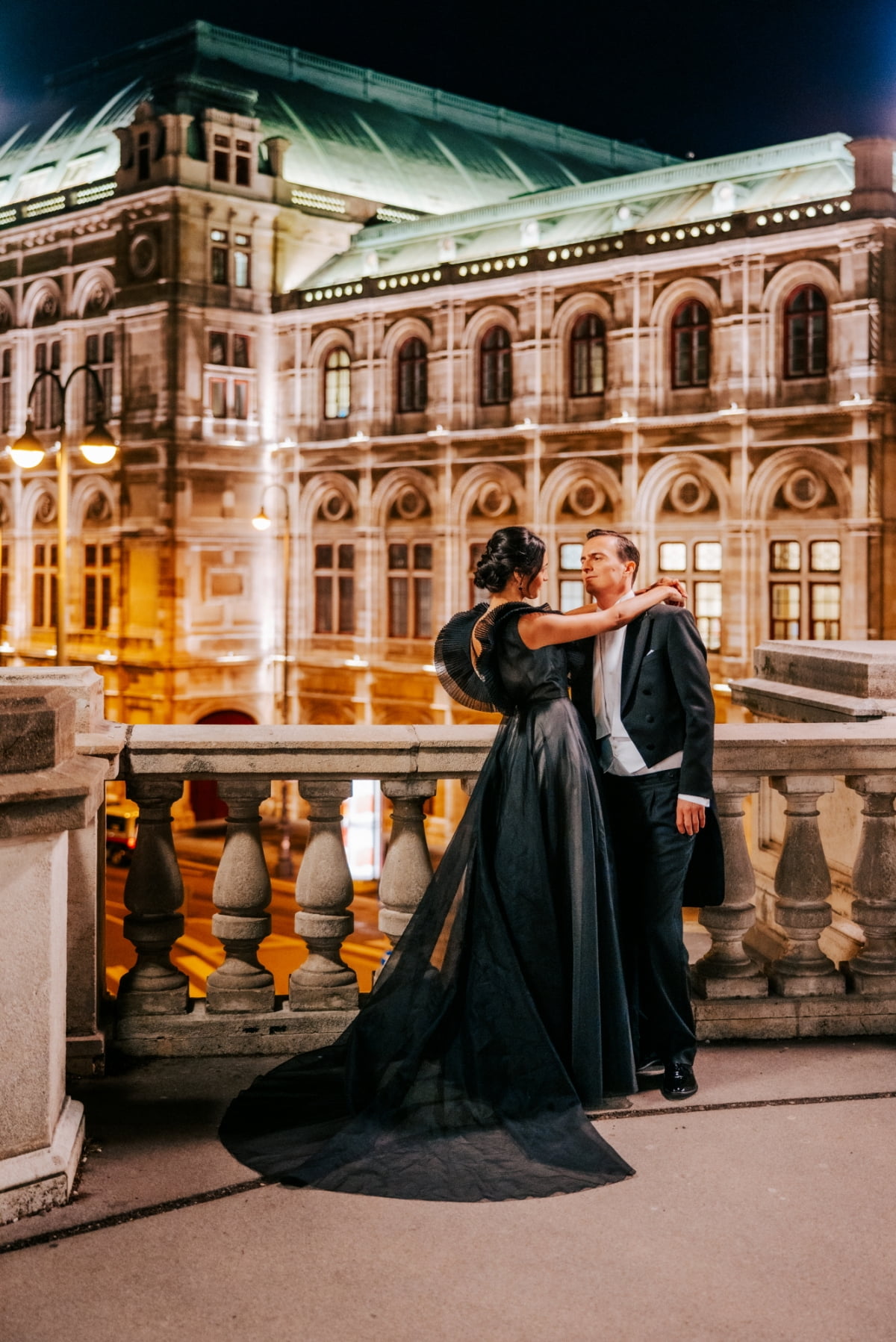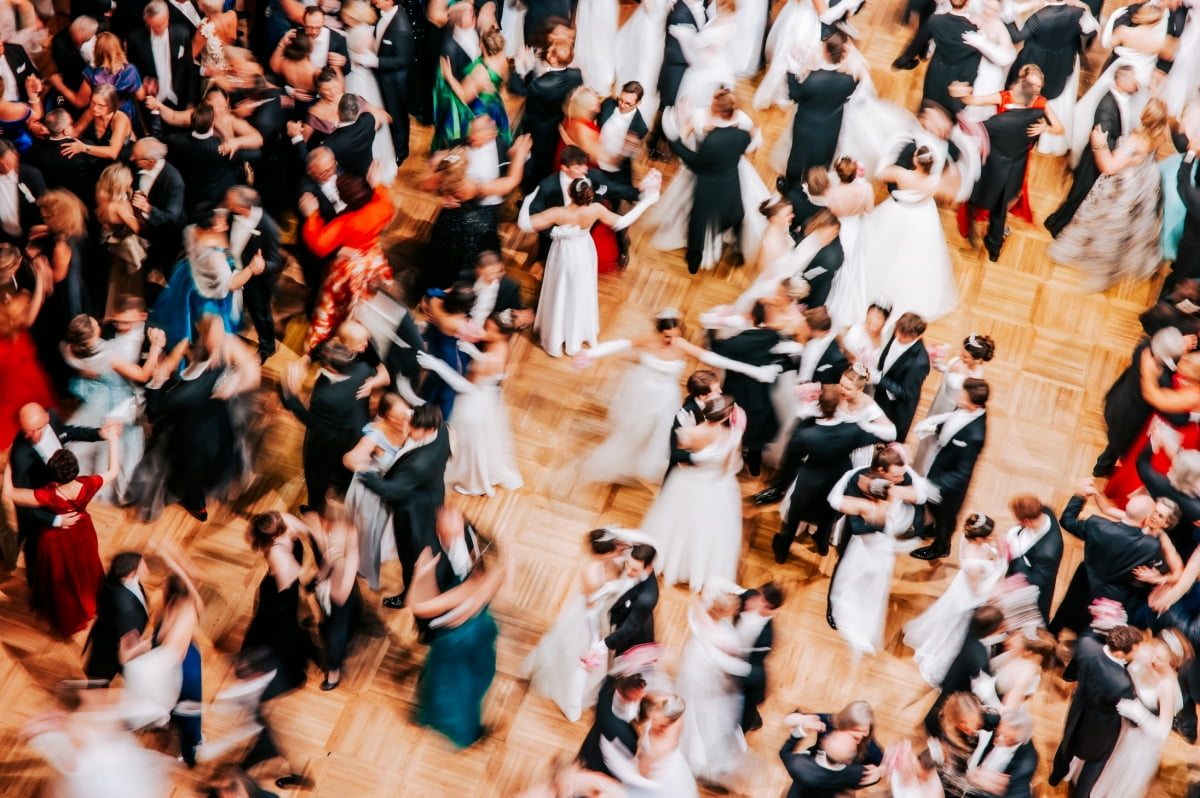From the Opera Ball, Philharmonic Ball, and Bienie’s Pick Coffee House Owner Ball.
Waltz flows in winter in Vienna. To mark the end of the year, the Vienna Tourist Office introduces the Vienna Ball, a long-standing tradition in Vienna and a ball in Vienna that brightens the city’s winter.
Every winter, hundreds of large and small balls are held throughout Vienna. The prom season is more colorful and rich than any other season, filled with people dancing to a variety of music, from waltzes to modern sounds. We have gathered a variety of Vienna balls that will give you an unforgettable experience during your trip to Vienna this winter, which is why Viennese awaits winter.
Coffee house owner ball. Photo = WienTourismus_Paul Bauer
Take a look at the Vienna Ball
From 19th-century VIP events to today’s Graben Street waltzes
In Vienna, considered the world’s capital of dance, more than 450 balls are held every winter. Every year, more than 300,000 people come to Vienna from all over the world to dance for over 2,000 hours and experience a unique and refined party culture, including the Viennese Waltz.
The Vienna Ball, a ball in Vienna, began to gain popularity and spread widely during the Vienna Congress held in 1814-1815. Numerous royals and politicians from all over Europe flocked to Vienna to redraw the continent’s borders. The ball was a popular event held so that the distinguished guests gathered in Vienna could have a good time. Balls were held so frequently that an interesting expression arose: ‘Der Kongress tanzt!’ (The meeting dances!) Afterwards, Emperor Joseph II held a ball in the ballroom of the Hofburg Palace that anyone could enter, establishing the Viennese ball culture that everyone enjoys today.
Today, the Viennese ball season traditionally coincides with the Parsing, or Carnival, season, starting on November 11 and continuing until Ash Wednesday (the beginning of Lent in preparation for Easter, around late February to early March). People gather at Graben Shopping Street in the old town and dance a waltz together to announce the start of the ball.
The waltz, known as the ‘King of Dances’, is an icon of Viennese party culture and a necessary dance for all balls. The fascinating rotating movements of the waltz serve to provide a pleasant sense of intimacy in the solemn atmosphere of the ball. Johann Strauss I, the father of the waltz, contributed to the popularization of the waltz by composing 152 elegant waltzes suitable for dancing. In 2025, Vienna will hold an event to commemorate the 200th anniversary of the birth of Johann Strauss II, the king of waltzes. The entire city will become a stage where Strauss’s glory will be recreated in all his glory.
If this is your first time waltzing, you may want to take a short-term class run by a dance school. Several courses are available, and you can learn the correct etiquette to follow at a prom. In particular, ‘Luf Dance School’ provides short-term quick waltz courses for overseas tourists who lack practice time.

Elfenclyde’s dress and the Vienna State Opera. Photo = WienTourismusPaul BauerCouture Elfenkleid
Viennese ball traditions
Gifts, dress code, and debutante stories
Among the traditions that have continued since the 19th century, there is the Damenspende culture, a small gift given by the ball host to the women entering the ball. In the past, people usually gave colorful and elaborate souvenirs, such as fans decorated with pearls, but recently, it is common to give small watches or snacks. In some dances, a Herrenspende is held where books are prepared for the men.
A strict dress code is enforced in Vienna ballrooms. Women must wear long dresses or traditional Austrian clothing, and men must wear tailcoats or tuxedos. Since it is considered rude to wear a wristwatch, a gold watch with a chain is appropriate. For men, wearing a white bow tie is required at some proms.
Prom costumes can be rented through specialized rental shops. We recommend ‘Lambert Hopper Jr.’ for men’s tuxedos, and ‘Kleiderferlei Rottenberg’ for women’s dresses. Shoes can be obtained through Tanz Boutique. Vienna fashion brands that offer fantastic prom dresses are also worth paying attention to. If you attend the prom wearing a dress from Elfenklyde, famous for its romantic wedding dresses, and Eva Polesinski, a star on the international fashion scene since 2008, you will be the center of everyone’s attention.
A stricter dress code is required for debutantes, young women attending the ball for the first time. You must wear a white dress and a small crown-like crown, and hold a bouquet of flowers in your white gloved hands. The debutante opens the ball by linking arms with his or her partner in a tuxedo. Their dance begins with a polonaise and continues with a waltz. The opening ceremony of the ball ends with the director of the ball declaring ‘Alles Walzer!’ It means ‘Everyone waltz!’ After this sound is heard, all guests can come out on stage and waltz.
A cadriille usually follows from midnight. Cadrieu refers to a dance in which all participants gather together in a square shape. You must learn the dance on the spot, following the dance master’s demonstration. The joyful atmosphere created by dancing the cadriille continues until 5 a.m. Every ball in Vienna ends with a final waltz played as the ballroom lights dim. After the dance, people stop by a nearby coffee house to end the night with a bowl of goulash soup or a quick snack.

Vienna Opera Ball. Photo = WienTourismus_Paul Bauer
Vienna’s famous ballroom
Vienna Opera Ballis Vienna’s representative event and the highlight of the season, marking the end of all balls. It is held every year on the last Thursday night before Ash Wednesday at the Vienna State Opera. It is an important event where major cultural figures and high-ranking political and business figures from Austria and abroad gather. All scenes, including the red carpet, opening ceremony, and interviews, will be broadcast live around the world through TV and live apps. The Vienna State Opera will stop performances two days before the opera ball, remove seats from the audience, and create a temporary stage. The stairs and lobby are decorated with hundreds of palm trees and colorful flowers. More than 5000 guests attend the Opera Ball every year. This season’s Opera Ball will be held on February 27th next year.
A ballroom where you can feel the traditional Viennese atmosphere. Coffeehouse Owners’ BallThere is. Every winter, the Hofburg Castle turns into the world’s largest and most beautiful coffee house. Although it is called a miniature version of the Opera Ball, it is actually the largest ball held during the season. An even more luxurious ball will be held on February 21 next year, with a performance by the Vienna State Opera Ballet and the Vienna Opera Ballet Orchestra.
Considered the pinnacle of the Viennese ball season. Vienna Philharmonic BallIt is held in the Golden Hall of Musikverein. Although it is relatively small in scale, it has a reputation as a ballroom for artists, with the world-famous Vienna Philharmonic Orchestra performing as the opening act. The Philharmonic Ball, celebrating its 82nd season this winter, will be held on January 23 next year from 10 p.m.
Reporter Park So-yoon, Hankyung Magazine [email protected]

